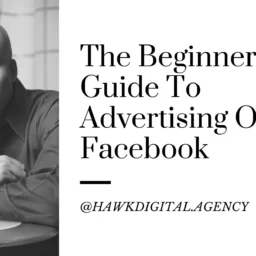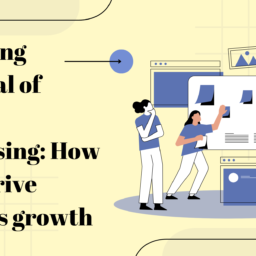
A career-building network has been increasingly built by LinkedIn. It enables individuals to highlight their professional resumes online and compete for jobs in a marketplace where recruiters can search for top-quality employees. It has also now become a key gathering ground for B2B communications and marketing and a forum. This blog will tell you How to Use LinkedIn Analytics for a B2B Audience.
LinkedIn is an essential platform for firms that represent other industries because of its specialization, and that means marketing takes on a slightly different position and style for this audience. However, what does not change is the value of analytics and the most productive investments in time and resources in making effective marketing decisions.
So if you’re a B2B company, here are some of the ways that you can benefit from LinkedIn and its analytics.
Finding Your Tools
Of course, you need to generate an account to take advantage of LinkedIn analytics. You are likely to have a LinkedIn page and account for the company and your employees’ accounts. The difference between LinkedIn interactions and Twitter/Facebook interactions is significant. You and your staff represent the organization on LinkedIn. This is not where social media contact happens in private or informal ways, and professionalism is everything.
If you are the one who develops the company’s LinkedIn page, you will have access to that page’s metrics, or whomever you appoint. “The analytics tab is located at the top, between “Page” and “Action.” Anyone with Page Admin status has the authority to view the analytics of a company page. It will have its tab under “Admin View.
Data with Relevance
Data can be important for making sound business decisions, especially in marketing, but only if you look at the right data, can you get good results. What analytics are the most valuable for you on LinkedIn?
The LinkedIn Analytics tab offers you three metrics that are instantly useful: tourists, alerts, and followers. However, there are more detailed, granular details inside these three helpful metrics that may or may not be useful to you, depending on where your specific preferences and priorities lay.
Visitors
It is a simple name, but you will see how many visits to the website in this situation. This is a simple name.
If you want to improve your exposure and see how many people come to search your stuff, you can start. You will divide the data into basic metrics, such as traffic and demographics, using your visitor analysis.
Traffic Metrics
You may be interested in figuring out at what time the largest number of visits are receiving, or you may be interested in seeing which individual pages visitors look at the most.
Alternatively, you may want to verify the number of unique guests according to the degree of interaction. Traffic metrics explain all this to you.
Demographics
It’s not a matter of how many users are visiting a website, for others, nor who they are. Because LinkedIn is so precise about detailing the professional history of a person, visitor analytics will break down the professional demographic. So you can see how many investors are looking at a website, whether you are trying to secure funding. Or if you are trying to hire a graphic artist, how many graphic design professionals are looking?
Who visits is often much more relevant than the raw number of tourists, and a can provide this specificity to you through LinkedIn.
Updates
While the visitor metrics provide you with insight about who is viewing your website, the notifications show you if you’re content performs well or not.
The measure for updates tells you which pieces of material receive traction, which languishes and may benefit from a different approach. In the highlights and interaction indicators, you’ll get valuable results.
Update Highlights
This measure is a long-term actionable data goldmine. For all the material you make on your website, Update Highlights measures the amount of feedback. Whether you are uploading videos, posts, images, or some mix of those elements, the highlights feature tells you what kind of reaction you get every month.
Posts, likes, and shares are all mirrored here so that you can track the success of your content across your timeline.
Engagement Metrics
This is a vital metric since it breaks down the fundamental essence of the material elicits’ experiences. It makes it easier for you to see what is going well and what is not. For each piece of content, interaction analytics track views, specific impressions, clicks, likes, shares, and other significant details.
Engagement metrics also discriminate between organic effects and outcomes paying for. The red graph line shows the resulting traffic if you have paid for ads on LinkedIn. While the blue graph line indicates regular and organic traffic. This is critical to discern how effective you’re paying activities are.
Followers
Finally, the number of followers you will produce is one of the most critical indicators for advertisers’ playing the “long game.” If you can force users on the LinkedIn page to like your business and continue to accept your daily marketing emails, you have practically obtained the “repeat customer” equivalent.
The follow-up metrics help you better understand your consumers’ demographics and understand your competition.
Follower Demographics
For individual firms, this may be a critical metric. Depending on whether you are soliciting potential partners or customers, hiring talented people, or merely attempting to build new relationships, the types of followers you have will be vital to your business plans.
Followers Demographics allow you to break down followers’ characteristics. It is broken into categories such as venue, occupation, business, size of the organization, and more.
Companies to Track
It’s interesting to see how others are doing to know whether or not your metrics are successful. Companies to watch metric tells you how companies are doing similarly to yours. You should compare your interaction rate to others to see if you can outperform or underperform and adapt accordingly. For Brands to watch, you get concrete statistics on the overall number of fans, new followers, tweets, and other companies’ participation rates.
This can be very significant in helping you determine where and how a can improve your performance. For example, suppose you see that another company has a higher degree of interaction than you do. In that case, whether it is because that company produces videos, by creating videos, podcasts, or any other type of content that can attract and retain consumers, you might decide to develop your content.
Final Thoughts
LinkedIn has grown to fame. As a specialist social media network and as a viable marketing tool and a generation leader.
Using the practical, useful analytics offered by LinkedIn, marketers will produce successful outcomes. As long as the correct information is obtained, evaluated, understood, and used for more reliable, efficient targeting. Understand LinkedIn Analytics and learn how your company with a Specialized Diploma in Social Media Marketing will benefit from its results. Download your brochure now!






